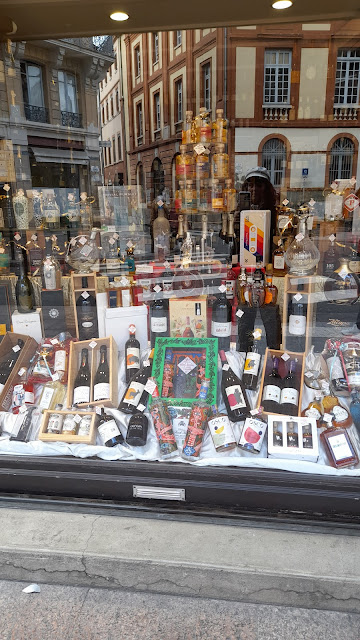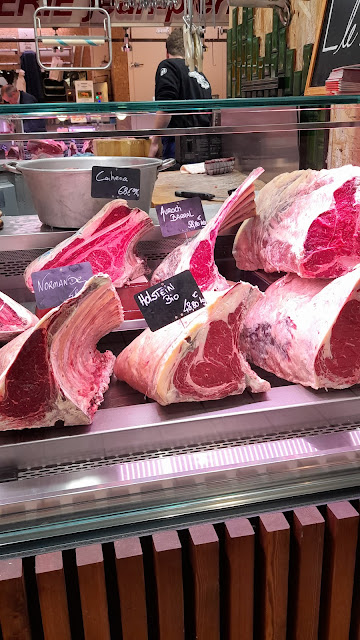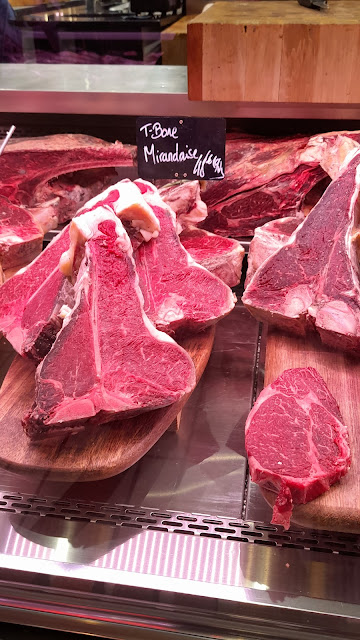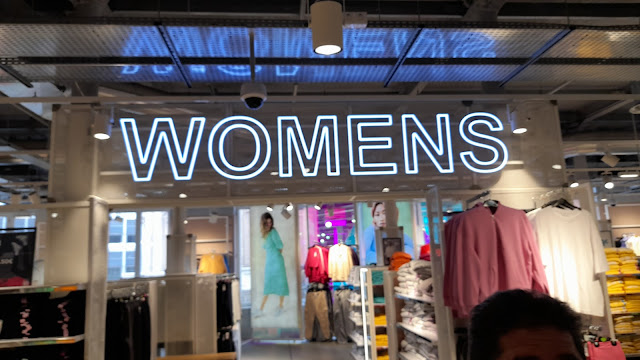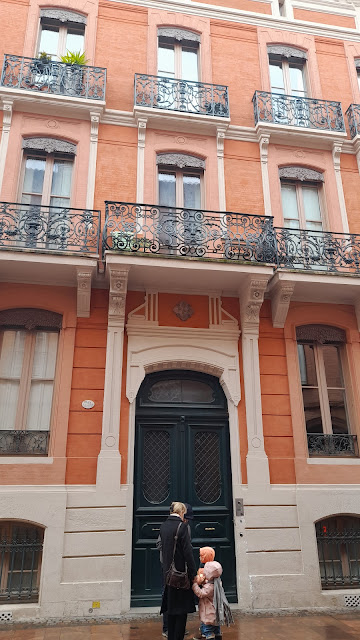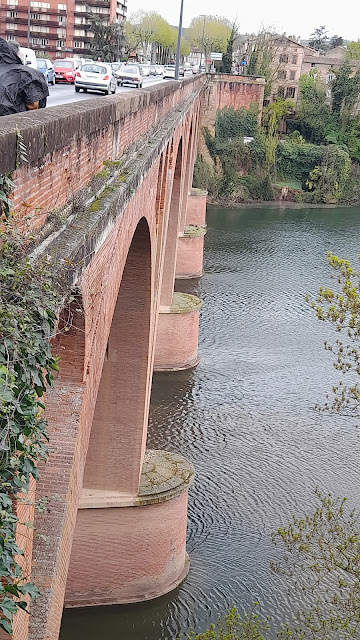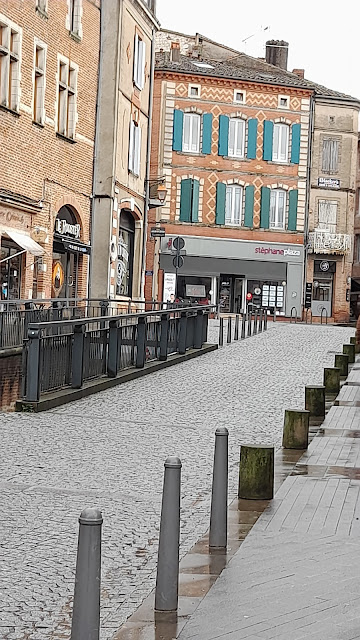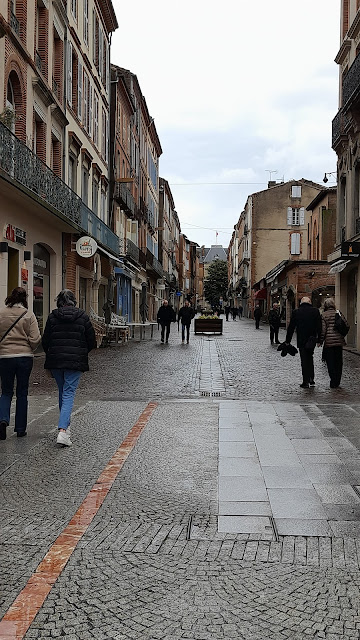1st day - 12-04-2023
This evening we went out and saw the Capitole at night in all it's glory. We also saw Place du President Tomas Wilson and then took a look at the lovely Galeries Lafayette. Then back home for a much needed rest 😀
How magical is this?
Toulouse is a city located in southwestern France, in the region of Occitanie. It is the fourth largest city in France, with a population of over 475,000 inhabitants. Toulouse is known for its rich history, vibrant culture, and beautiful architecture.
One of the most notable features of Toulouse is its pinkish-hued brick buildings, earning it the nickname "La Ville Rose" or "The Pink City". The city's historic center, known as the "Capitole", features the impressive Capitole building, which houses the city hall and a theater.
Toulouse is also home to several important museums, including the Musée des Augustins, which houses an impressive collection of European art from the Middle Ages to the early 20th century, and the Cité de l'Espace, a museum dedicated to space exploration.
The city is famous for its gastronomy, with specialties such as cassoulet (a stew made with beans, sausage, and duck or pork), foie gras, and Armagnac (a type of brandy).
2nd day - 13-04-2023
This is what we got to do on our 2nd full day in Toulouse.
- The Basilique St. Sernin, it was built in the 11th and 12th centuries and is dedicated to Saint Saturnin, also known as Saint Sernin, the first bishop of Toulouse and a martyr who was beheaded in the city in the 3rd century. The basilica is a masterpiece of Romanesque architecture and is renowned for its exceptional beauty and grandeur. It is one of the largest and best-preserved Romanesque churches in Europe, and has been designated a UNESCO World Heritage Site. The exterior of the church is notable for its impressive octagonal tower, which stands over 200 feet tall, and for its striking brick and stone construction. The interior is equally impressive, featuring a nave that is more than 300 feet long, with barrel vaults supported by alternating piers and columns. The church also contains a number of beautiful chapels and tombs, as well as a 12th-century crypt that houses the relics of Saint Sernin.
- Les Halles Vitor Hugo is a covered market were we bought our lunch to go and eat at home since home was stones throw away. It was named after the famous French writer Victor Hugo, who spent some time in Toulouse. The market was built in the 19th century and underwent a major renovation in 2015, preserving its historical architecture while updating its facilities and amenities. The market offers a wide variety of products, including fresh fruits and vegetables, meats, fish, cheeses, bread, pastries, and flowers. It also has several restaurants and cafes, making it a popular destination for locals and tourists alike. In addition to its commercial activities, Les Halles Vitor Hugo also hosts various cultural events throughout the year, such as concerts, exhibitions, and workshops. The market is open every day except Monday, and it is easily accessible by public transportation.
-The Jacobin convent in Toulouse, also known as the Couvent des Jacobins. It was founded in the 13th century by the Dominican Order and became a religious and intellectual center. During the French Revolution, it was seized and converted into a prison, and later used as a military barracks and hospital before falling into disrepair. In the 20th century, it was restored and converted into a cultural center, and today it is home to a museum of modern art and a research center for medieval history. It is also known for hosting an annual book fair, one of the largest and most prestigious literary events in France.
- The Pont Saint-Pierre is a historic bridge that spans the Garonne River in Toulouse, France. The bridge was built in the 19th century and is known for its elegant design and ornate decorations. It was built between 1852 and 1857 to replace an earlier bridge that had been destroyed by flooding. It was designed by the architect Paul-Joseph Garon and features a series of arches and pillars that support a roadway and pedestrian walkway. The bridge is named after the nearby Saint-Pierre des Cuisines church, which was built in the 4th century and served as a monastery before being converted into a parish church in the 19th century. Today, the Pont Saint-Pierre is a popular spot for locals and tourists to enjoy views of the Garonne River and the surrounding city. It is also an important transportation link, connecting the left and right banks of the river and providing access to several major roads and highways.
- Le Dôme de la Grave is a historic building which was originally part of the La Grave Hospital complex, which was founded in the 12th century to care for the sick and the poor. The Dôme itself was constructed in the 18th century as a chapel for the hospital. The building is notable for its distinctive dome, which was designed by architect Jacques-Pascal Virebent. The dome is topped with a lantern and a cross, and features intricate frescoes and ornate stucco work. Today, the Dôme de la Grave is no longer used as a chapel, but rather as a cultural and events space. It hosts concerts, exhibitions, and other cultural events throughout the year. The building is open to visitors, who can admire its impressive architecture and learn about its rich history.
- Pont Neuf is a bridge that spans the Garonne River in the city of Toulouse, in southwestern France. It was built between 1544 and 1632, making it the oldest bridge in the city. The bridge has seven arches and is 220 meters long. It was originally built to connect the city center with the left bank of the Garonne and was an important part of the city's transportation infrastructure. Today, Pont Neuf is a popular tourist attraction in Toulouse, offering beautiful views of the Garonne River and the surrounding city. It is also a popular spot for fishing and boating.
- Quai de la Dourade is a quay which is situated along the Garonne River, which runs through the heart of the city. The quay is known for its historic buildings and picturesque views of the river. One of the most notable buildings on Quai de la Dourade is the Hôtel Dumay. This 18th-century mansion was built for a wealthy merchant and has since been converted into luxury apartments. Other historic buildings on the quay include the Hôtel de Bagis and the Hôtel de Ramel. Quai de la Dourade is also home to several restaurants and bars, many of which offer outdoor seating with views of the river. It is a popular destination for locals and tourists alike, particularly during the summer months when the weather is warm and sunny.
Stand on your star sign and make a wish!
Portuguese are found everywhere 😉
ANYONE GET IT?
L'enfant au bonnet d' ane
Found in a super market ----marmite
3rd day - 14-04-2023
- The Capitole in Toulouse, France, is a historic building that serves as the city hall and a centre for cultural events. It is located in the heart of the city, on the Place du Capitole, and is one of the most recognizable landmarks of Toulouse. It was built in the 18th century, replacing an earlier building that had been destroyed by fire. Its façade is characterized by a grandiose entrance featuring eight pink marble columns, and a large balcony above that overlooks the square. Inside, the building houses the offices of the mayor and city council, as well as the Salle des Illustres, a grand hall adorned with murals and sculptures that is often used for exhibitions and concerts. The Capitole is also home to several cultural institutions, including the Théâtre du Capitole, which hosts operas and ballets, and the Musée des Augustins, a museum of fine arts located in a former monastery adjacent to the Capitole. The square in front of the building is a popular gathering place for locals and tourists alike, and is often the site of concerts, markets, and other events throughout the year.
On this day we got on the bus and went off to discover beautiful Albi. Albi is a city in the Occitanie region in the southern part of France. It is located about 85 kilometers northeast of Toulouse, the regional capital. Albi is known for its impressive cathedral, the Cathédrale Sainte-Cécile d'Albi, which is a UNESCO World Heritage Site. The city is also home to the Musée Toulouse-Lautrec, which features a collection of works by the famous post-impressionist painter Henri de Toulouse-Lautrec, who was born in Albi. In addition, Albi has a charming historic center with narrow streets and old buildings, and it is situated on the banks of the Tarn River, which provides opportunities for outdoor activities such as boating and fishing.
If you're contemplating suicide here is certainly not the place. Once the train arrives these doors open directly onto the train!4th day - 15-04-2023
On this day we were supposed to catch the train to Lourdes but due to their strikes we had to take the bus to one of my favourite soul searching places! This place makes me so peaceful that it's an experience I recomend to everyone and no I'm not religious! Lourdes is a small town located in the southwestern part of France, in the Hautes-Pyrénées department. It is most famous for its Catholic pilgrimage site, the Sanctuary of Our Lady of Lourdes, which attracts millions of visitors each year. The sanctuary is built on the site where a young girl named Bernadette Soubirous claimed to have seen the Virgin Mary in a series of apparitions in 1858. Since then, Lourdes has become one of the most important pilgrimage sites in the world, and the town's economy is heavily dependent on tourism. Apart from the sanctuary, Lourdes is also known for its beautiful natural surroundings, including the Pyrenees mountains and the Gave de Pau river.
5th day - 16-04-2023
As we had an evening flight we left our home at 12:00 as per the rules and regulations and did some more sight-seeing of Toulouse. We walked from Place Esquirol down to lovely Carmes and then to Jardin Royal and the Jardin du Grand Pond, Monument des Combattants de La Haute-Garonne, Cathedrale St-Etienne and back to the Capitole for the rest of the afternoon. We then caught the metro to the Toulouse-Blagnac Airport.
- The Carmes district is named after the Carmelite Convent that was established in the area in the 13th century. The district is known for its narrow streets and historic buildings, and is a popular tourist destination. One of the main attractions in the Carmes district is the Carmelite Church, which dates back to the 17th century. The church has a beautiful baroque interior and is known for its ornate altar and impressive organ. Visitors can also explore the nearby Carmelite Convent, which has been converted into a cultural center and often hosts concerts and exhibitions. It is also home to a lively market, the Marché des Carmes, which takes place every morning except Mondays. Here, visitors can browse stalls selling fresh produce, flowers, and local specialties, such as cassoulet and foie gras.
Jardin Royal: This is a small public park located in the heart of Toulouse, close to the Place du Capitole. It was created in the 18th century and features a central fountain, statues, and ornamental gardens with trees, flowers, and shrubs. The park is a popular spot for locals and tourists to relax and enjoy the greenery and the views of the surrounding historic buildings.
Jardin du Grand Rond: This is a larger public park located in the eastern part of Toulouse, near the Canal du Midi. It was created in the 19th century and features a circular layout with a central pond, a bandstand, a children's playground, and a variety of trees, plants, and flowers. The park is a popular spot for jogging, picnicking, and walking, and it hosts cultural events and festivals throughout the year.
- The Cathedral of Saint Etienne (Saint Stephen) in Toulouse is a stunning example of Gothic architecture and is one of the most prominent landmarks in the city. The cathedral was constructed in the 13th and 14th centuries and has undergone numerous renovations over the centuries. One of the most notable features of the cathedral is its impressive bell tower, which stands at 67 meters (220 feet) tall and is one of the tallest in France. The tower features intricate carvings and a spire at the top. The interior of the cathedral is equally impressive, with soaring ceilings, stained-glass windows, and ornate decorations throughout. The cathedral is also home to a number of important works of art, including a painting by Rubens and a 16th-century marble altar.
- Toulouse-Blagnac Airport, is an international airport located in the southwestern part of France. It serves the city of Toulouse and the surrounding areas, and is the fifth-busiest airport in France in terms of passenger traffic. The airport has two terminals: Hall A and Hall B. Hall A handles flights to non-Schengen destinations, while Hall B handles flights within the Schengen area. There are several airlines that operate from Toulouse Airport, including Air France, Ryanair, easyJet, and Lufthansa, among others. Toulouse Airport offers a variety of services and facilities for travelers, including restaurants, cafes, duty-free shops, ATMs, currency exchange offices, and car rental services. The airport is well-connected to the city of Toulouse via public transportation, including bus and tram lines, as well as taxis and rental cars.
Hope you´ve enjoyed the tour with us, do come back for more pretty soon.
%5B1%5D.jpg)
_(2)%5B1%5D.jpg)
_(4)%5B1%5D.jpg)
_(5)%5B1%5D.jpg)
_(6)%5B1%5D.jpg)
_(7)%5B1%5D.jpg)
_(8)%5B1%5D.jpg)
_(9)%5B1%5D.jpg)
_(10)%5B1%5D.jpg)
_(11)%5B1%5D.jpg)
_(12)%5B1%5D.jpg)


_(3)%5B1%5D.jpg)







